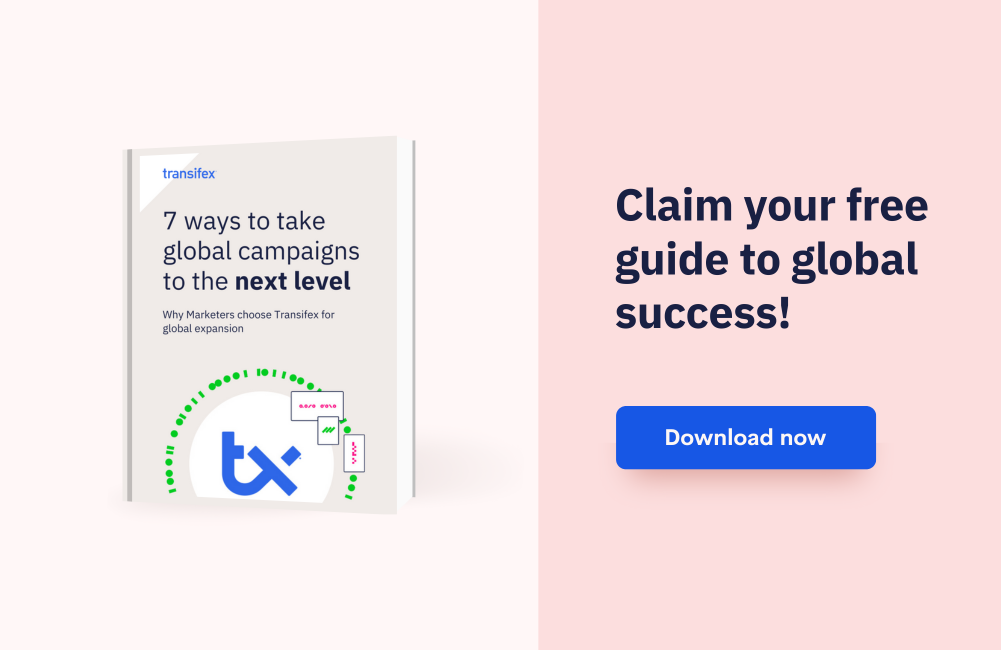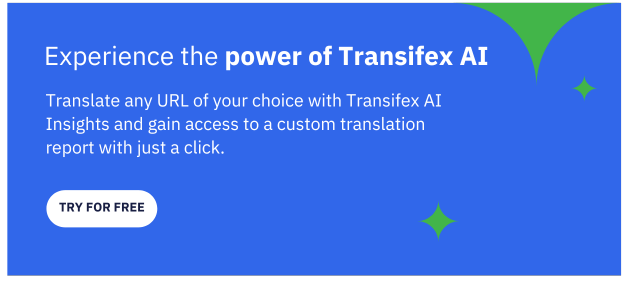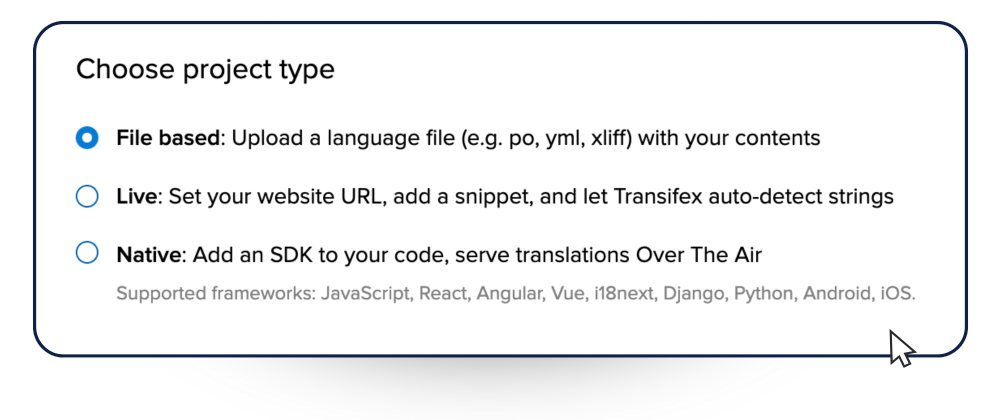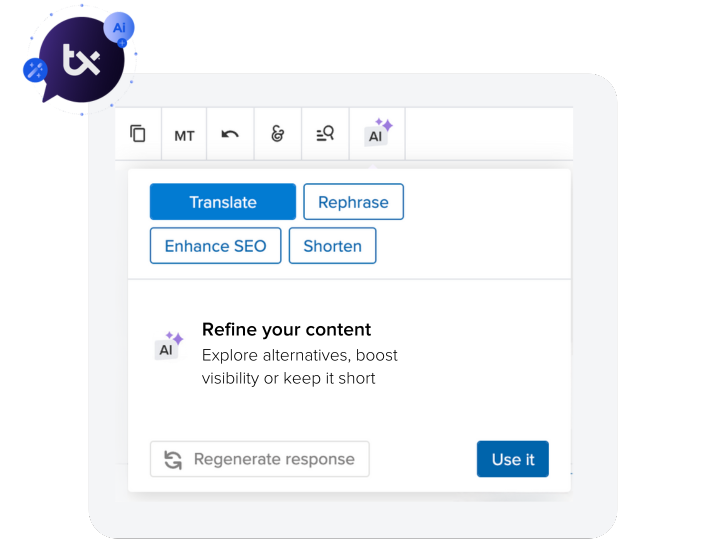In today’s borderless digital marketplace, if you confine marketing efforts to a single language you’re leaving enormous opportunities on the table. A successful global content marketing strategy is essential for expanding into new markets and increasing brand recognition worldwide. It further establishes your position as a true industry leader.
In this blog, we’ll explore what is global content marketing and how to craft a knockout plan that’ll skyrocket your brand’s reach.
Let’s dive in!
What is Global Content Marketing?
Global content marketing is about creating and distributing content that resonates around the world. In other words, it’s not just about translating your website or other assets into several languages; it’s about communicating your message effectively across cultures while keeping your brand voice consistent.
When you show cultural sensitivity in marketing material, you’re telling your international audience, “We get you.”
In essence, this strategic approach focuses on relevancy and usefulness to help you build genuine connections with a wider audience than ever before.
“The best content doesn’t feel like content – it feels like a conversation.” – Rand Fishkin, Founder of Moz
Why is a Global Content Strategy Important?
The online world may feel universal, but language and culture still create significant barriers.
English – the most spoken language globally, represents less than 20% of the world’s population. Yet, more than 50% of websites create content solely in English. That leaves 4 out of 5 people worldwide unable to understand half of the web.
A multilingual content strategy bridges this gap by extending the reach and impact of your brand’s message beyond borders and barriers. It’s a powerful tool to unlock the full potential of your content marketing efforts across international markets.
Here’s why it’s so impactful:
- Increased conversions: Content tailored for international audiences boosts conversions by 70% on average. Plus, almost 90% of global marketing campaigns outperform their English-only counterparts in both click-throughs and conversions.
- Maximize Marketing Investment: Content marketing is shown to offer one of the highest ROI among all digital marketing tactics. A global strategy stretches your investment further, ensuring your content’s impact multiplies across different markets.
- Strengthen Brand Recognition: Success in marketing is said to be measured by how easily people recall a brand when they need a solution. And you create more relevant and memorable experiences by adapting content to match local preferences. This way, you enhance brand awareness and can become the go-to brand in your niche for each market.
- Establish Thought Leadership: People are 131% more likely to buy from you after viewing your educational content. And what better way to become their trusted resource than providing solutions in their local language? As Nelson Mandela said, “If you speak to a man in a language he understands, it goes to his head. But if you speak to a man in his own language, it goes to his heart.”
- Build Deeper Connections: Content that resonates effectively across different cultures and languages is key to fostering genuine connections. This personalization increases engagement and builds lasting customer loyalty.
How to Develop a Global Content Marketing Strategy For Your Business? (+ A Free Template)
Follow the steps below to craft a successful international content strategy that boosts brand consistency and makes every piece of your content count.
1. Define Target Audience Personas
Before you start creating content, it’s important to clearly define who it is for. This is the planning phase of the strategy, where you conduct market research to create a detailed profile of your ideal customers in the target region.
Here are a few key points to consider:
- Age, gender, and income level
- Preferred social media platforms
- Online shopping behavior
- Commonly used devices (mobile, desktop, tablet)
- Peak online activity times
You can use a combination of online research tools, local focus groups, and consultants to gather valuable insights.
Understanding these factors will help you create content that appeals to your global audience and increases engagement.
2. Set SMART Goals
Setting clear objectives for your global content strategy kicks everything off on the right foot. It’s like setting up a roadmap before a big trip. You need to know where you’re headed to choose the best route.
That’s why you always want to clearly define Specific, Measurable, Achievable, Relevant, and Time-bound (SMART) campaign goals.
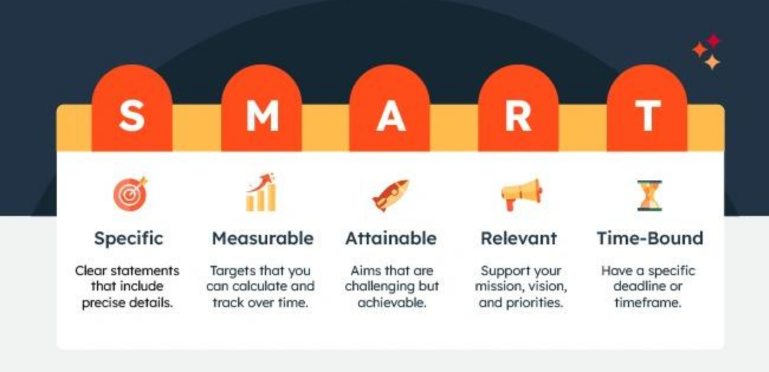
In most cases, your goals will include one or a few of the following key metrics: conversion rate, click-through rates, leads generated, organic website traffic, or audience engagement (comments, likes, etc.).
For example, “Increase website traffic from France by 20% within 6 months” is a SMART goal that precisely tracks necessary KPIs. It’s also clearer for your team to strategize than simply wanting to “get more visitors.”
By aligning your aims with audience expectations, you make every piece of content more impactful and lay down the foundation for developing a sustainable strategy that resonates well across diverse cultural landscapes.
3. Create Localized Content
At the heart of effective global content marketing lies localization.
In contrast to translation, localization encapsulates the nuances, tone, idioms, and cultural references of the targeted audience. It ensures your content feels authentic, unique, and personalized.
How Localization Works (The Traditional Way)
Here’s a look at what a standard localization process usually entails:
- Content Export: Identifying and extracting translatable text within your website, apps, marketing materials, etc. This step can be done manually using spreadsheets.
- Translation: Converting the text into the target language either using translation tools or professional translators. The goal is to ensure accuracy in terms of messaging while effectively reflecting the brand’s voice based on guidelines and glossaries.
- Review & QA: Proofreading translations for contextual accuracy and cultural appropriateness. This step ensures everything aligns with the brand voice and local sensibilities.
- Formatting: Ensuring the translated content fits seamlessly into the design of your materials. This may involve adjusting images and layouts.
- Publishing Localized Content: Finally, deploying the localized content on relevant platforms and updating your multilingual website.
How Localization Works with Transifex
While these traditional steps are essential, they can be very time-consuming and resource-intensive – especially if you’re targeting multiple languages.
Transifex instead enables you to make the most out of your content with AI speed and advanced automations.
Automated Content Synchronization: Transifex integrates with your existing CMS, project management tools, and file repositories.
No more spreadsheets and tedious manual processes. Automate the extraction and identification of translatable content and enable dynamic updates to connected systems with zero downtime.
Ensure your brand’s messaging is always up-to-date and consistent across all your different channels.
Centralized Platform: Forget clunky back-and-forth exchanges. Transifex provides a collaborative workspace where your team and translators can work together seamlessly. Track progress, set automated notifications, and manage the whole process in one place.
Get your content in front of global audiences faster with a cross-functional and refined process.
AI Capabilities: Looking for human-quality translations that are tailored to your brand’s guidelines and glossaries? Need to ensure that your localized content is optimized for SEO in your target market? Or maybe you simply want to automate the review process for selected translations?
With Transifex, you can streamline your entire workflow using proprietary AI tools that are designed based on 16+ years of experience as a leader in the localization industry.
Advanced Translation Tools: Slash translation time by 70% by selecting translation tools that best fit your business needs. Beyond the AI capabilities of Transifex for producing translations, it also enables you to leverage popular Machine Translation (MT) tools, like DeepL or Google Translate, and offers a powerful Translation Memory (TM) feature. TM leverages past translations to ensure you never have to pay again for translating the same text twice. You can also upload or create brand-specific glossaries and style guides that Transifex AI or MTs can utilize to create consistent context-based content.
With Transifex, you can create human-quality localized content faster, easier, and at a much lower cost – allowing you to reach your global audience with truly impactful messaging.
Join global brands like Hubspot & Deezer and start your localization journey with Transifex for free.
4. Publish & Distribute Content
Now that your localized content is ready, it’s time to strategically position it in front of global audiences to maximize the reach and impact of your messaging.
Own Your Channels: The first step is to optimize your existing channels – website, blog, social media.
- SEO: Implement researched keywords in the target language, use meta descriptions, and structure content for search engine visibility.
- Social: Adapt your social media profiles, post captions, and hashtags to match the local platforms popular in your target region.
Branch Out Strategically: Identify the most relevant channels to reach local audiences in different countries:
- Local Search Engines: Optimize your content to rank well on search engines like Yandex (Russia) or Baidu (China).
- Regional Social Networks: Gain popularity on platforms like Weibo (China) or VK (Russia) where your target audience spends time.
- Niche Forums and Communities: Find where your target audience engages online and participate in discussions with valuable, localized content.
Collaborate for Reach: Tap into the power of collaboration to extend the reach of your content:
- Influencer Marketing: Partner with influencers, bloggers, or experts who have a strong following in your target market.
- Guest Posting: Contribute guest posts to existing platforms in local markets, increasing visibility and credibility.
- Local Teams: If your business is large enough, consider leveraging local teams to help tailor your content to resonate with the audience even better.
Pro Tip: Link back to relevant content on your website or landing pages. This drives traffic, boosts SEO, and creates a cohesive brand image for your international audience. It’s a great way to nurture new prospective customers in a long-term growth strategy.
5. Continuous Improvement and Adaptation
Global content marketing is not a set-and-forget strategy.
It requires continuous improvement and adaptation based on your performance and changing market conditions.
By regularly reviewing your KPIs and audience feedback, you can optimize your approach for better results.
The top three ways marketers measure the success of a content marketing strategy are social media analytics (67%), website traffic (63%), and website engagement (49%).
Test different formats to see what works and what doesn’t. Here’s a pro tip: don’t change too many elements simultaneously. This makes it difficult to pinpoint which variation is driving the results.
Instead, create slightly different versions of your content for each variable you’re testing. For example, you can test two headlines for the same blog post to measure the click-through rates.
Ready to implement these steps for your campaign? Here’s a free downloadable content marketing template to kickstart your journey.
Examples of Winning Global Content Marketing
Now that we’ve talked about the theory, it’s time to explore a few great examples of brands that have implemented a global content approach to achieve success.
GoPro: Embracing User-Generated Content on a Global Scale
Instead of solely relying on traditional marketing channels, GoPro leveraged the power of user-generated content (UGC) to stand out.
For instance, the GoPro Awards campaign encourages users worldwide to share their experiences filmed with GoPro cameras. The contest invites submissions in different languages and showcases adventures from around the globe.
Through UGC, GoPro achieves several key goals. Firstly, they get a vast library of authentic content that users create and share. The multilingual nature of the campaign also gives a sense of inclusivity. Users see themselves reflected in the stories shared by others, regardless of location or language.
This authenticity resonates deeply, making GoPro the go-to camera for capturing life’s epic moments worldwide.
Duolingo: Making Language Learning Fun with Localized Humor
Learning a new language can be intimidating. But Duolingo’s social media strategy injects a healthy dose of humor to make it fun and engaging.
Their strategy? Localized content specifically tailored for platforms like TikTok. Duolingo understands that humor is subjective, so they don’t rely on a one-size-fits-all approach.
This ensures their humor translates effectively – breaking down language barriers and boosting brand awareness with international audiences. This approach also reinforces Duolingo’s brand identity as a fun and effective language-learning solution.
Conclusion
And there you have it. Our guide equips you with everything you need to know to build a winning global content marketing strategy. Consider how you can integrate these steps to strengthen your marketing efforts today.
Remember, the key lies in understanding your global audience, speaking their language (literally and figuratively), and leveraging data-driven insights to optimize your content continuously.
Optimize Your Global Content Marketing with Transifex
Transifex simplifies your global content marketing process by providing AI-powered localization at scale. With Transifex, you can:
- Boost conversions with content that resonates globally
- Maximize ROI and unlock new markets with ease
- Reduce time-to-market with streamlined AI-powered localization workflows
- Minimize translation costs and produce human-quality content with AI accuracy and speed
- Scale content creation and seamlessly manage multilingual localization
Ready to take your content marketing to a global scale?
Sign up on Transifex for a 15-day free trial of all our exclusive AI-powered localization tools.


